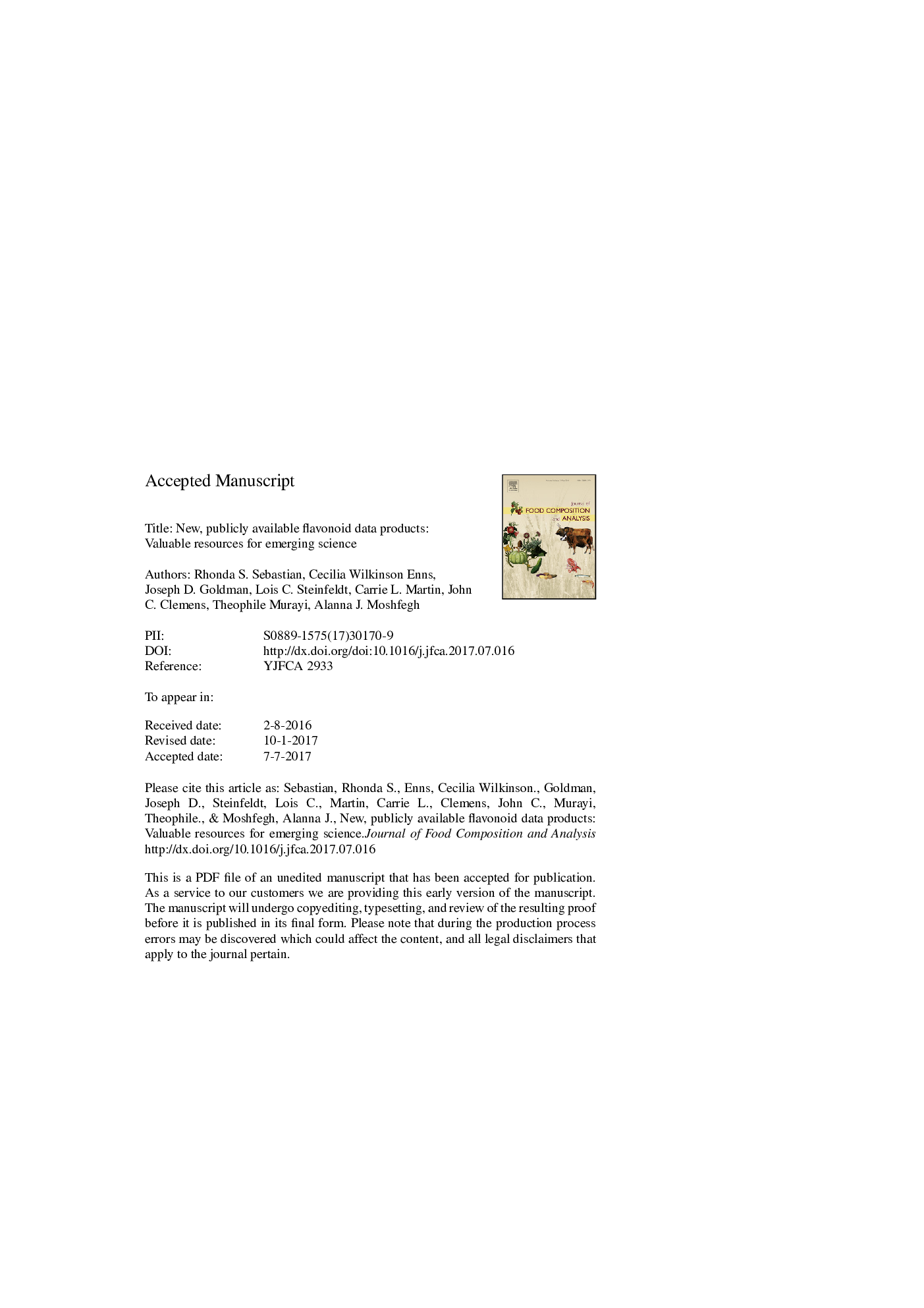| Article ID | Journal | Published Year | Pages | File Type |
|---|---|---|---|---|
| 7620060 | Journal of Food Composition and Analysis | 2017 | 23 Pages |
Abstract
Until recently, databases of the flavonoid composition of foods have been lacking, limiting the ability to assess dietary intakes. The objectives of this study are to describe new, publicly available flavonoid-related data products and apply them to assess flavonoid intakes and dietary sources of flavonoids in the U.S. population. Products currently available are the Provisional Flavonoid Addendum, a database of 29 individual flavonoid values for 7174 USDA food codes; the Flavonoid Intake Data Files, which are the result of applying the Addendum to dietary data from What We Eat in America, NHANES; and a set of tables describing flavonoid intakes in the U.S. population by selected sociodemographic characteristics. Mean intake of flavonoids by individuals age 2+ years was 214Â mg, with flavan-3-ols accounting for 81% of the total. Taking into account frequency of consumption and amounts consumed, the top food/beverage sources of total flavonoids and each flavonoid class were tea (total flavonoids, 78%; flavan-3-ols, 93%; flavonols, 38%), 100% citrus juice (flavanones, 61%), soy-based protein powders (isoflavones, 29%), berries (anthocyanidins, 27%), and mixed dishes (flavones, 24%). These new flavonoid-related products, which may be downloaded from the Food Surveys Research Group website at www.ars.usda.gov/nea/bhnrc/fsrg, are valuable tools that will enable the research community to conduct more comprehensive investigations concerning relationships between flavonoid intake and health.
Keywords
Related Topics
Physical Sciences and Engineering
Chemistry
Analytical Chemistry
Authors
Rhonda S. Sebastian, Cecilia Wilkinson Enns, Joseph D. Goldman, Lois C. Steinfeldt, Carrie L. Martin, John C. Clemens, Theophile Murayi, Alanna J. Moshfegh,
